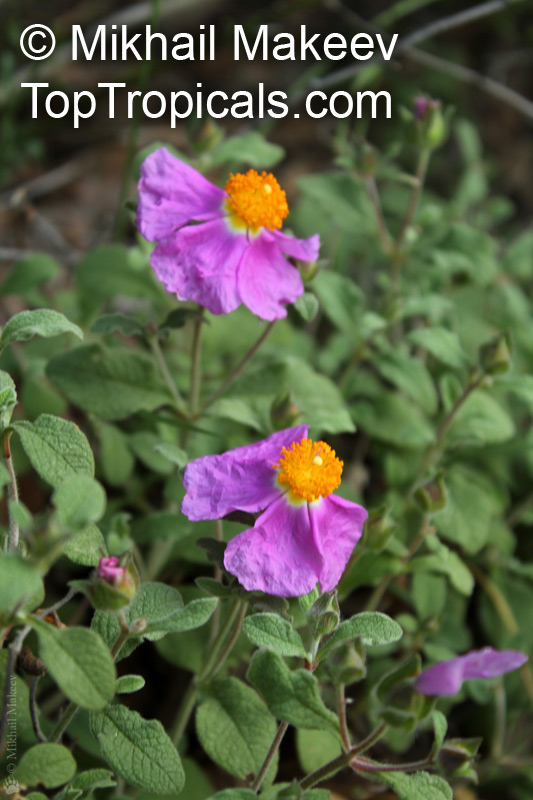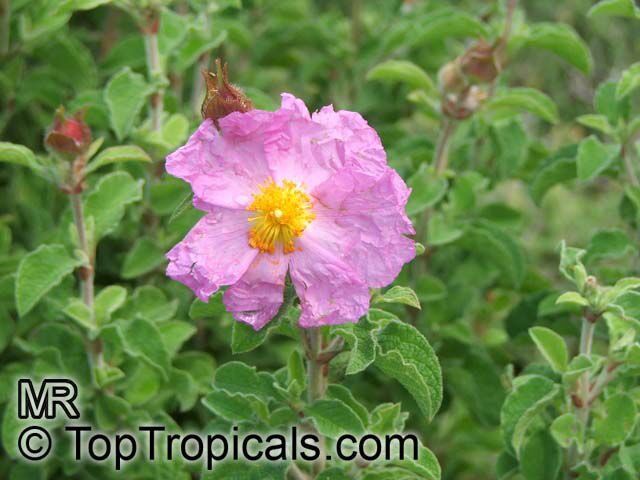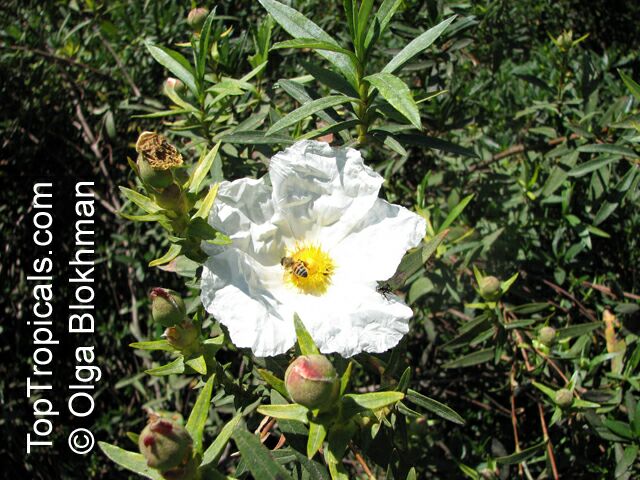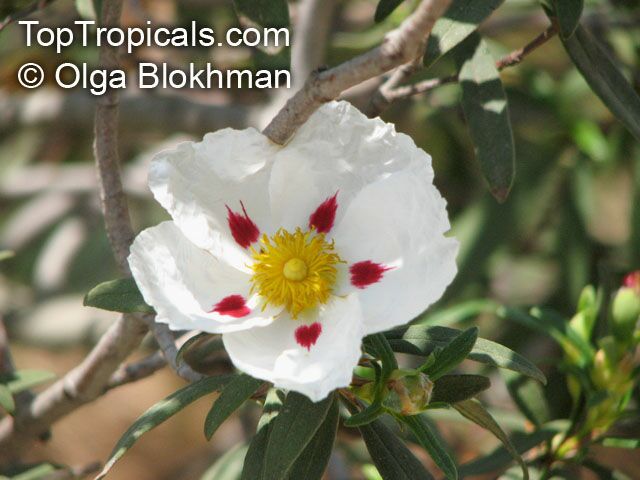Cistaceae - Botanical Family
Top Tropicals Plant Encyclopedia
| Number of plants found: 4 |
Botanical names: Cistus incanus, Cistus villosus
Common names: Hairy Rockrose, Pink Rockrose
Family: Cistaceae
Origin: Southern Europe, Mediterranean











They are thermophilous perennial shrubs found on dry or rocky soils, which require open, sunny places. As with many other Cistaceae, the species of Cistus have the ability to form mycorrhizal associations with truffles (Tuber) and are thus able to thrive on poor sandy soils or rocks.
The leaves are oval and crinkled, about 2 in(5 cm)long. Saucer-shaped rosy purple flowers about 2 in(5 cm) in diameter are produced in summer, the petals rumpled like tissue paper.
The most unique feature of this plant is its richness of polyphenols whose extraordinary abundance in the Pink Rockrose has popularized it as a valuable food supplement used in teas, taken alone and even incorporate in boutique health foods where its age old reputation of supporting the immune system and therefore assisting naturally with reisistance to and recovery from common colds and flu. This highly fragrant extract of the rockrose is a labdanoid terpene.When labdanum resin or leaves and twigs are steam distilled, a dark yellow oil is produced that is used in flavoring baked goods, gum and candy, and in laundry products and cleaners.
Botanical name: Cistus ladanifer
Common names: Gum Rockrose, Crimson-spot Rockrose
Family: Cistaceae
Origin: Mediterranean









It is a popular ornamental plant, grown for its strongly resin-scented foliage and conspicuous flowers. Its long slender leaves, green with greyish undersides, are fragrant in summer, being a major source of redolent essential oils, leaf distillates, and a resin called gum labdanum, used for perfumed products and flavoring. As with other rock roses, it requires full sun in a xeriscape garden.
Botanical name: Cistus salviifolius
Common names: Sageleaf Rockrose, Salvia Cistus
Family: Cistaceae
Origin: Mediterranean










Sageleaf Rockrose is a low, very erect shrub about two to three feet in height.
It cannot grow in the shade. It requires dry or moist soil and can tolerate drought. The plant can tolerate maritime exposure.
The dried leaves are used as an adulterant for marjoram.
Botanical name: Cistus sp.
Common name: Rockrose
Family: Cistaceae
Origin: Mediterranean
Hardiness: 0°F










Use link to repeat this search:
https://toptropicals.com/cgi-bin/garden_catalog/cat.cgi?search_op=and&keyword_op=and&language=e&family=Cistaceae&number=10
&no_change_lang=1&user=tt&sale=1&first=0






















